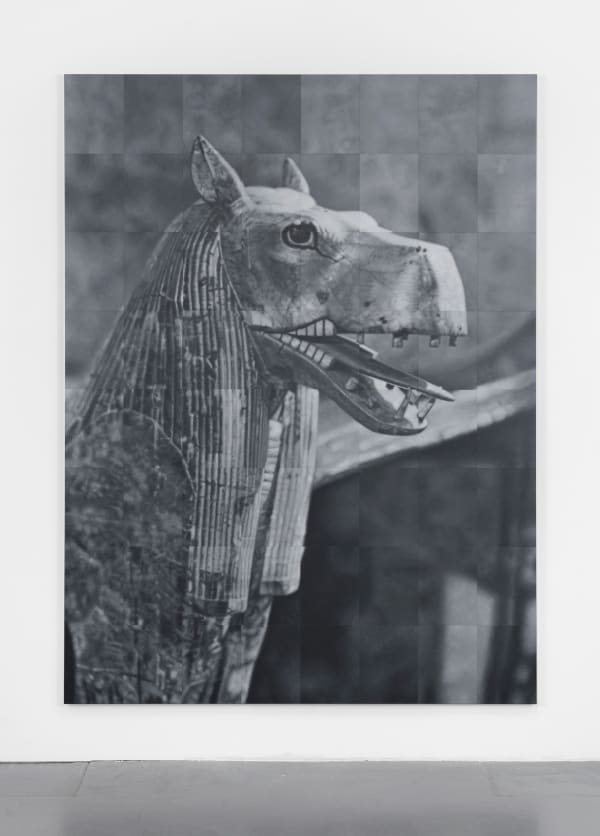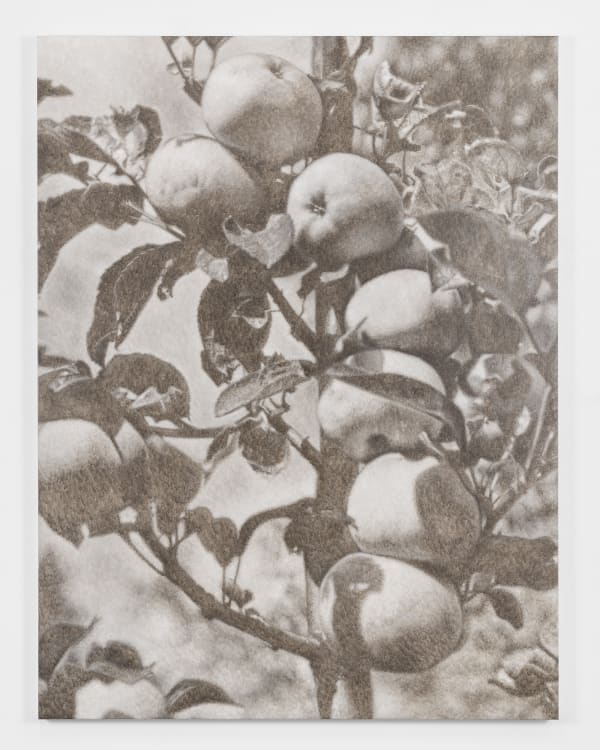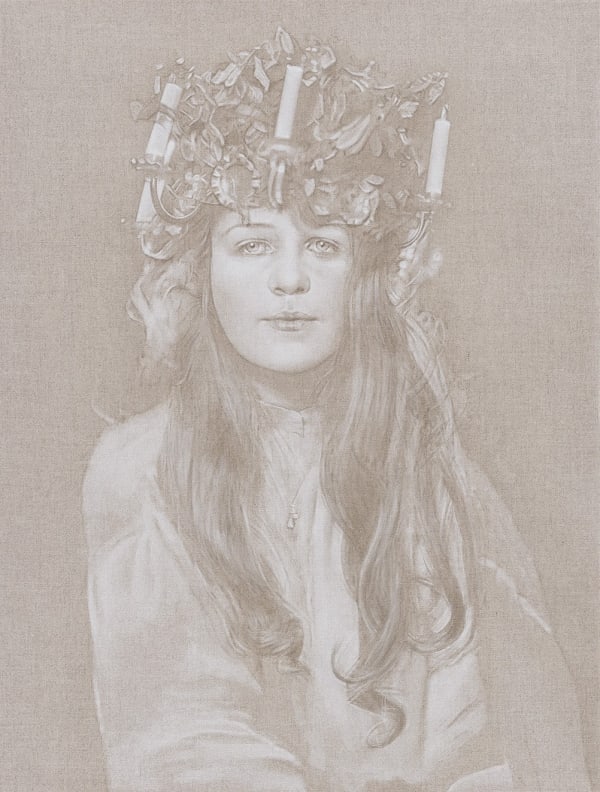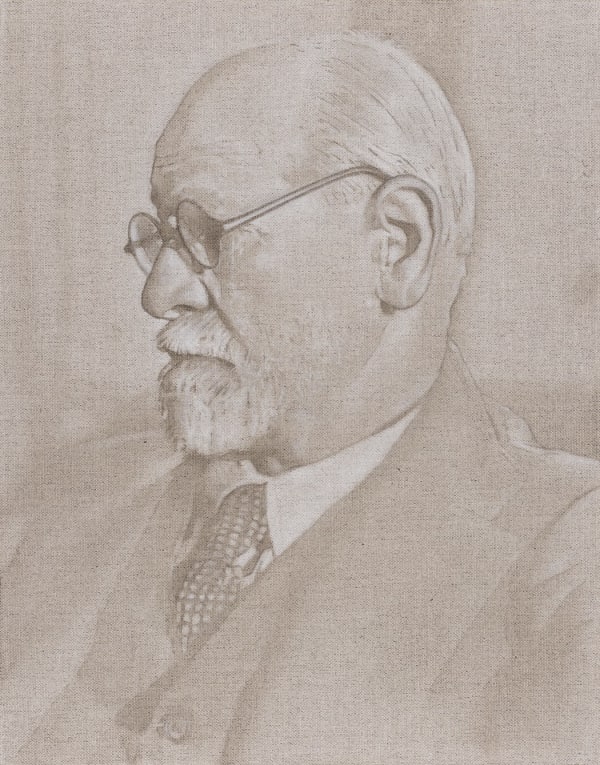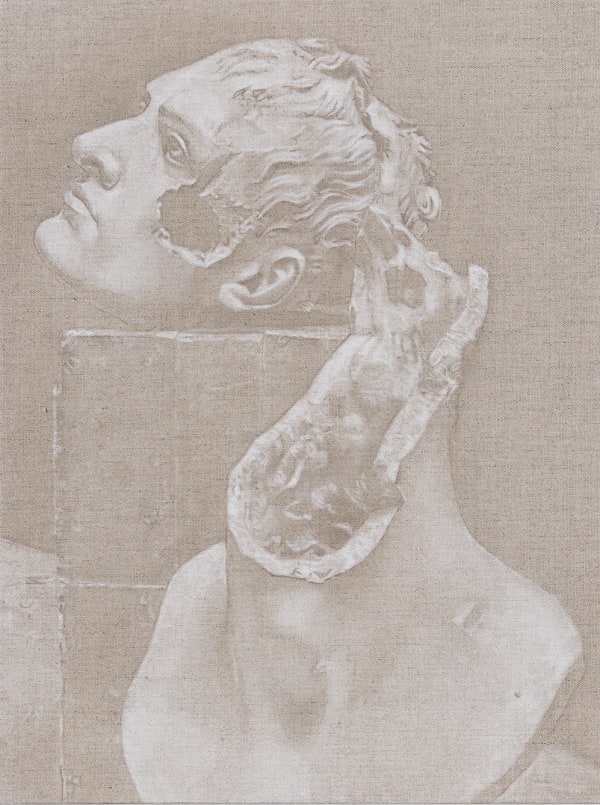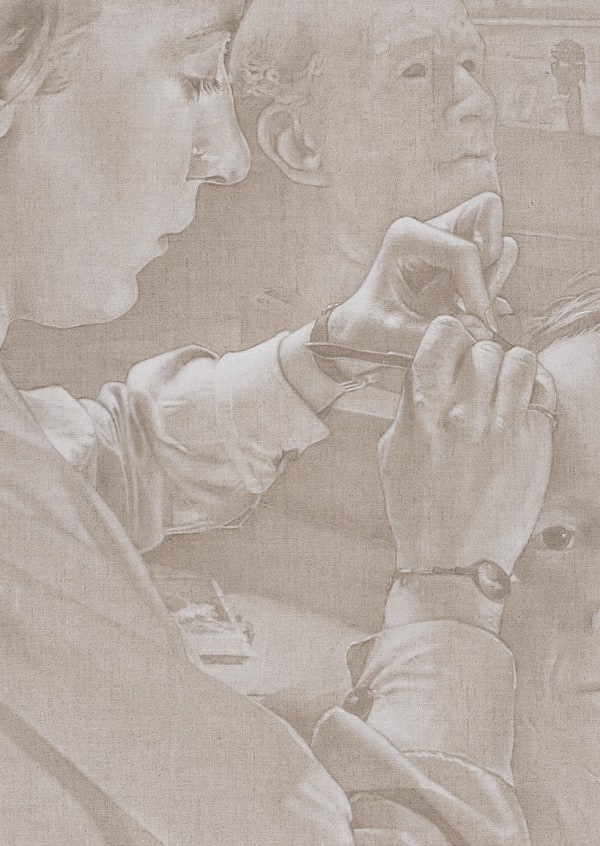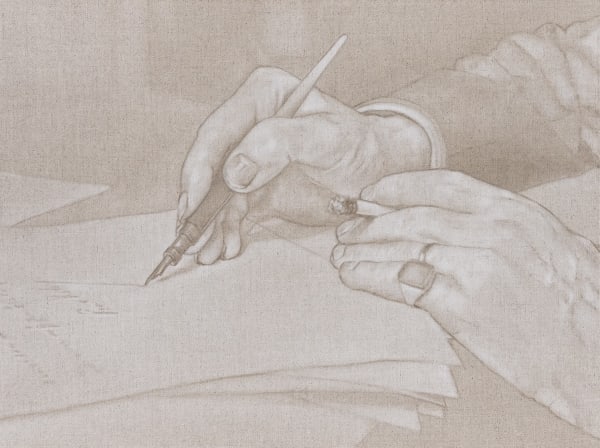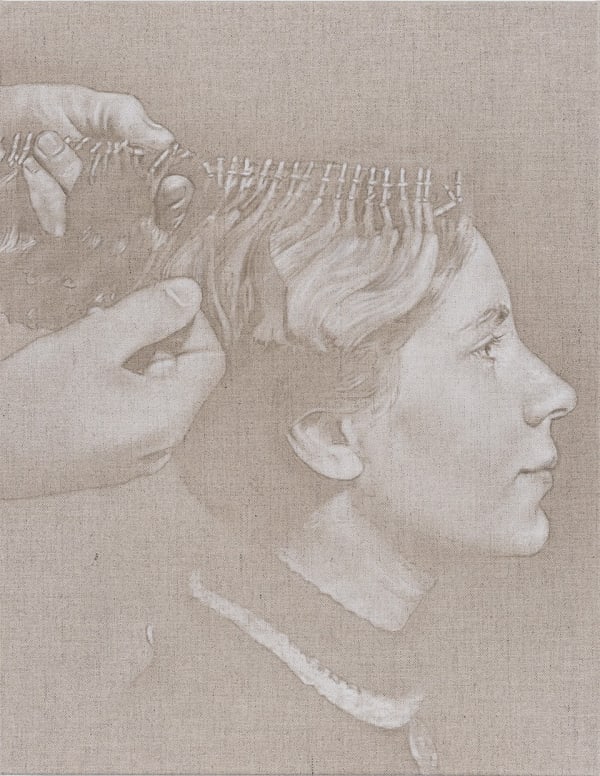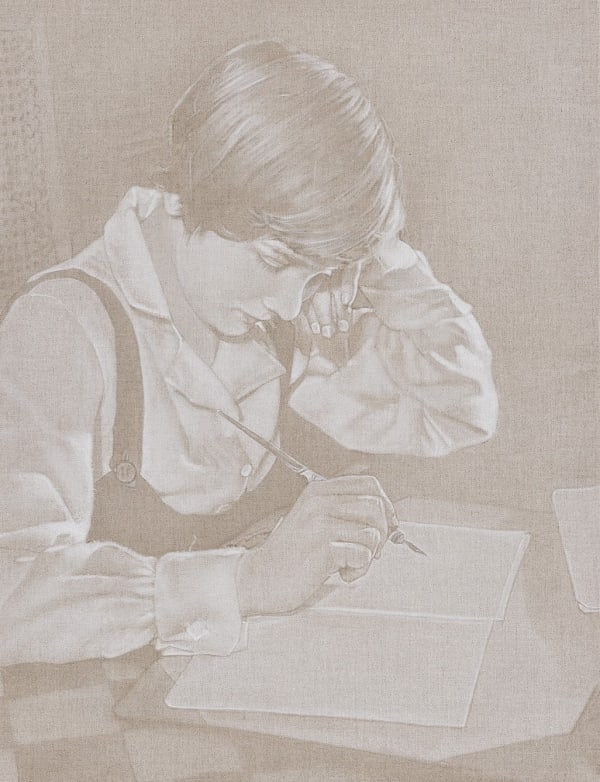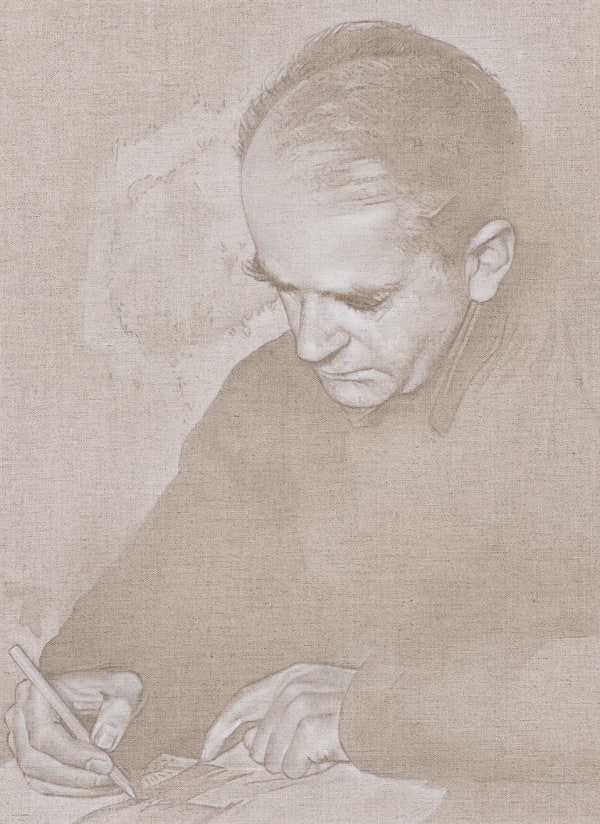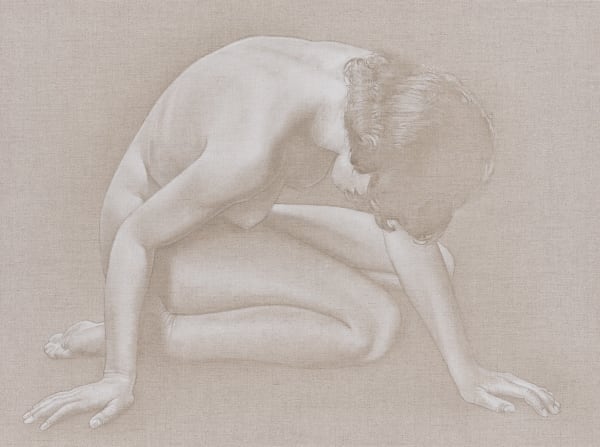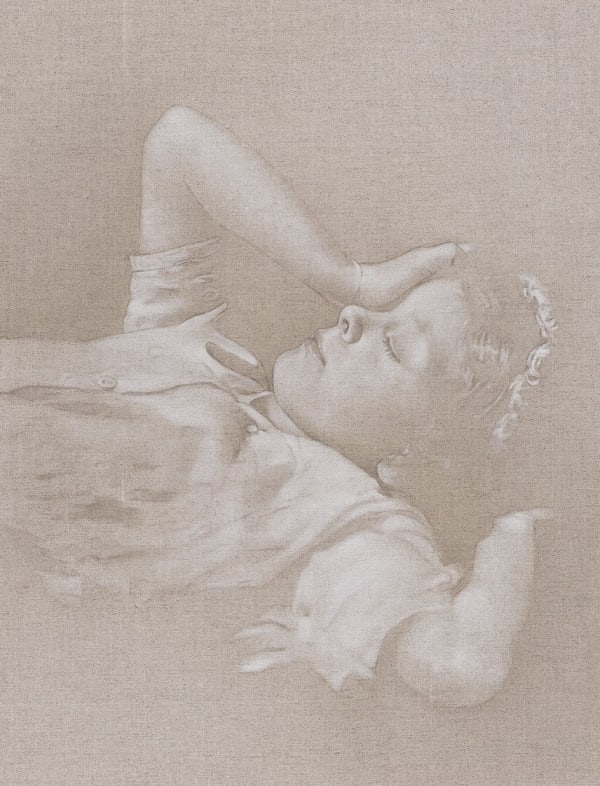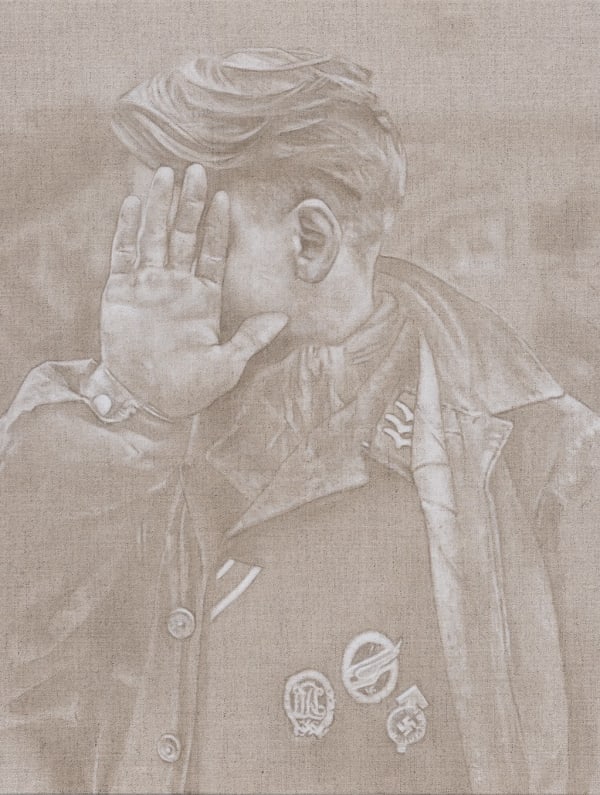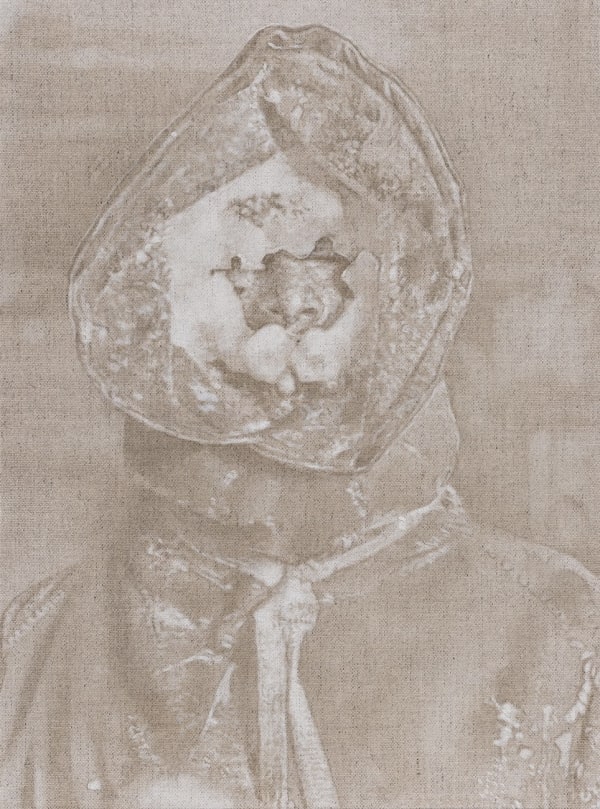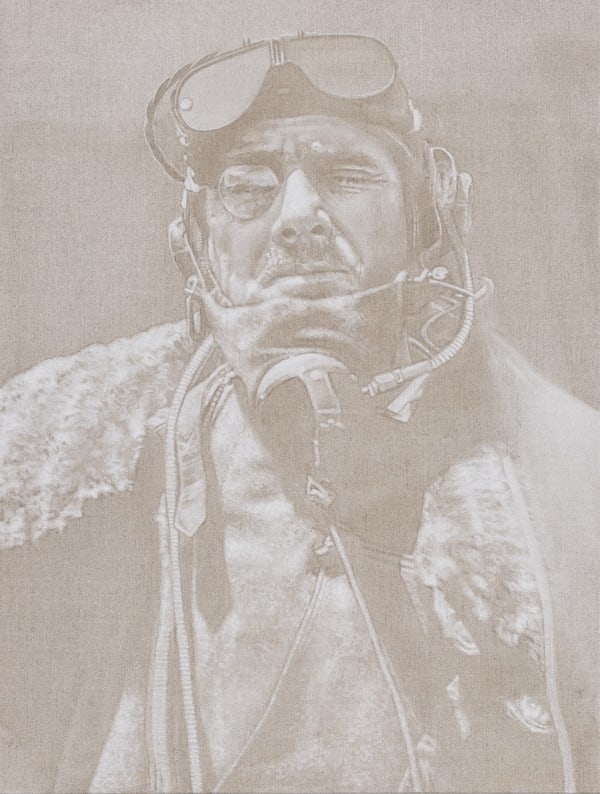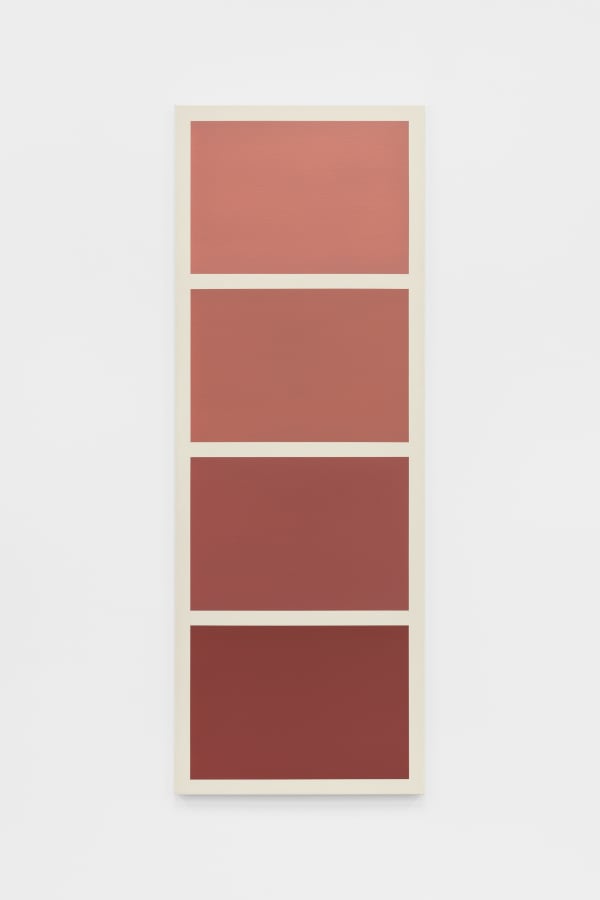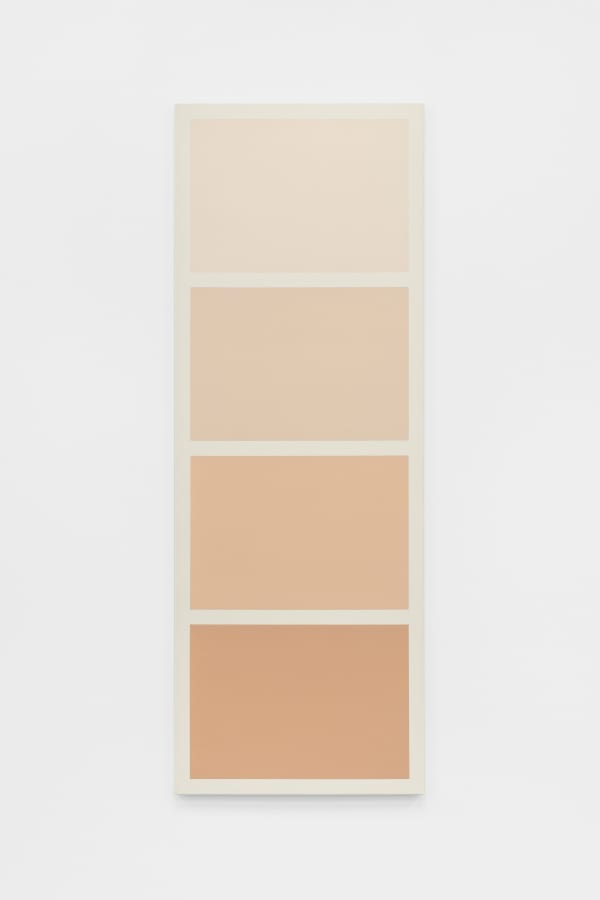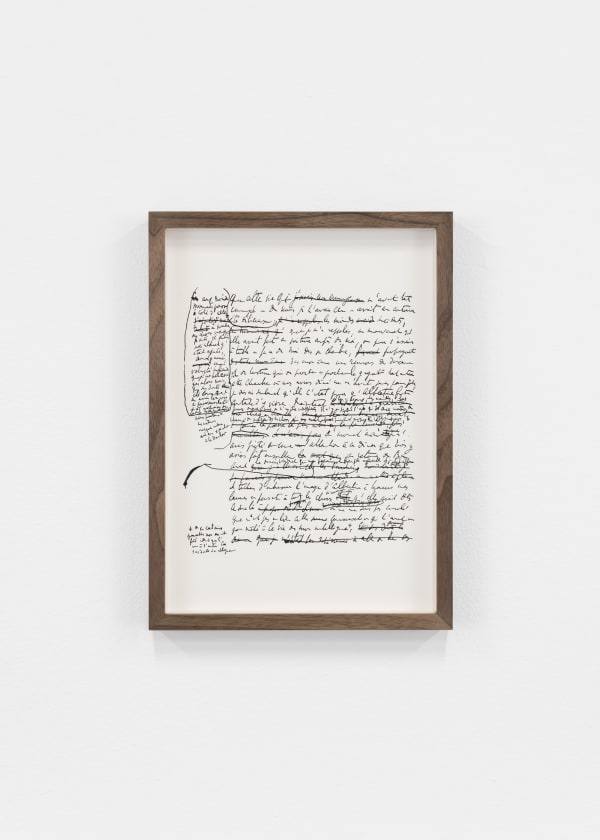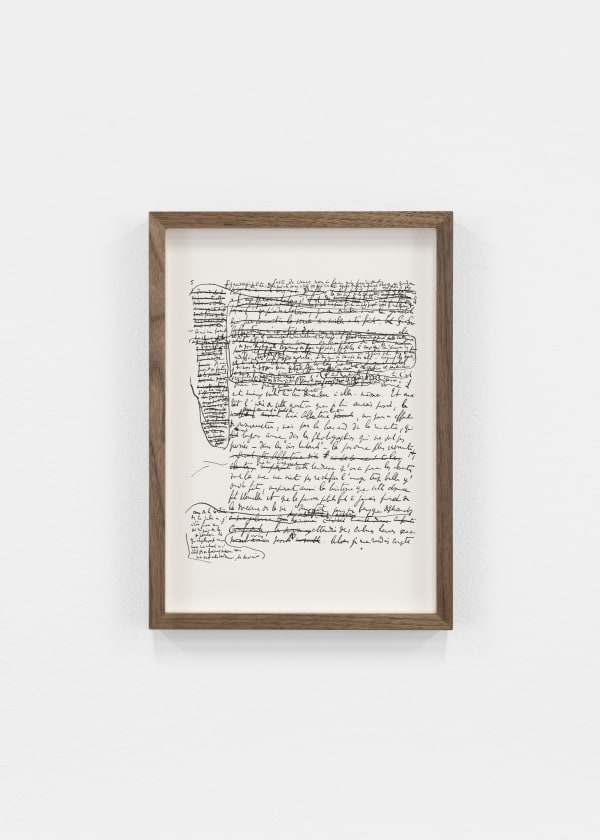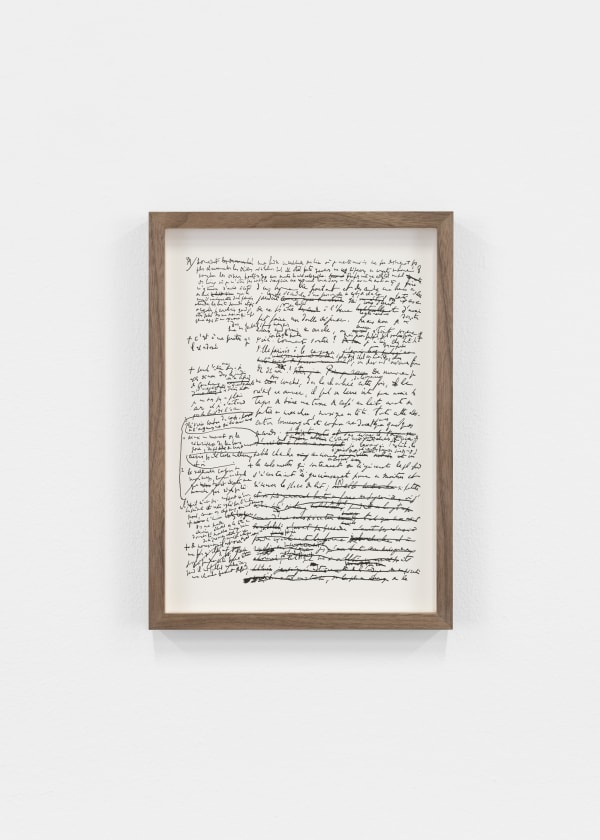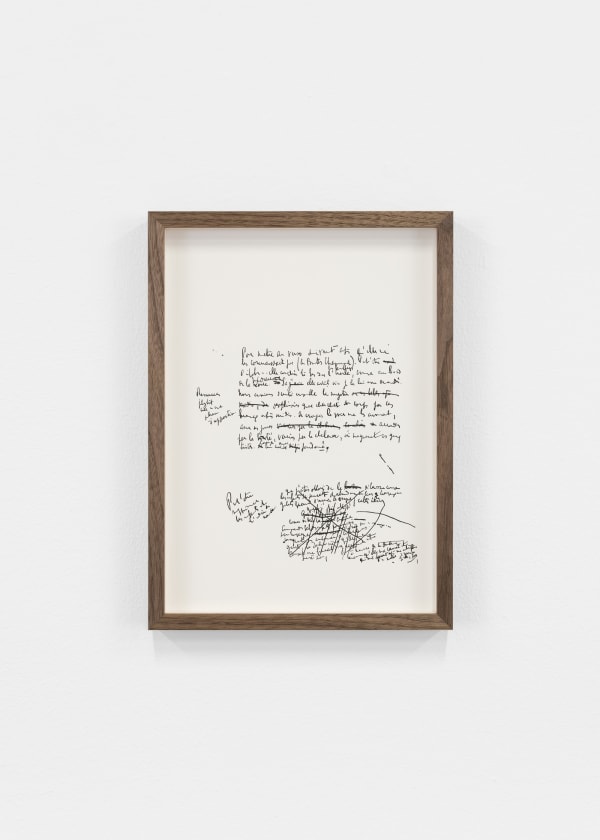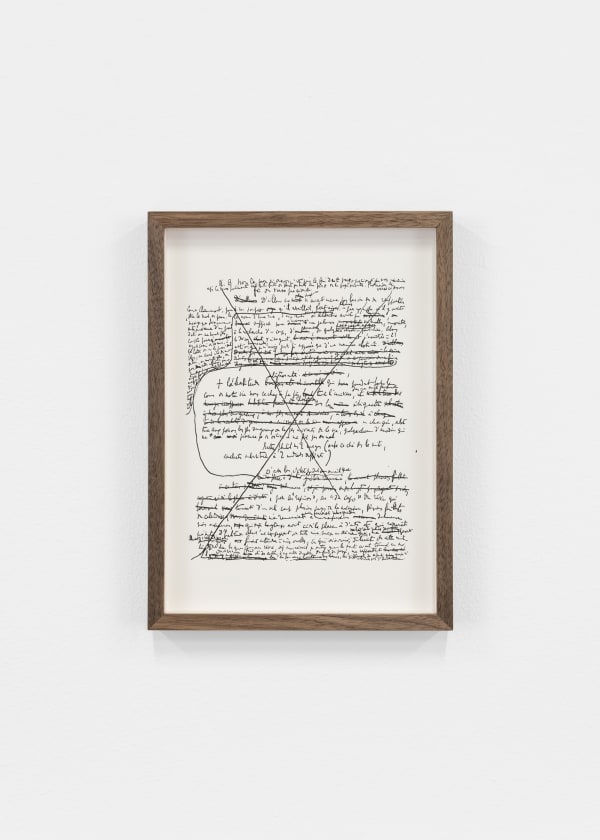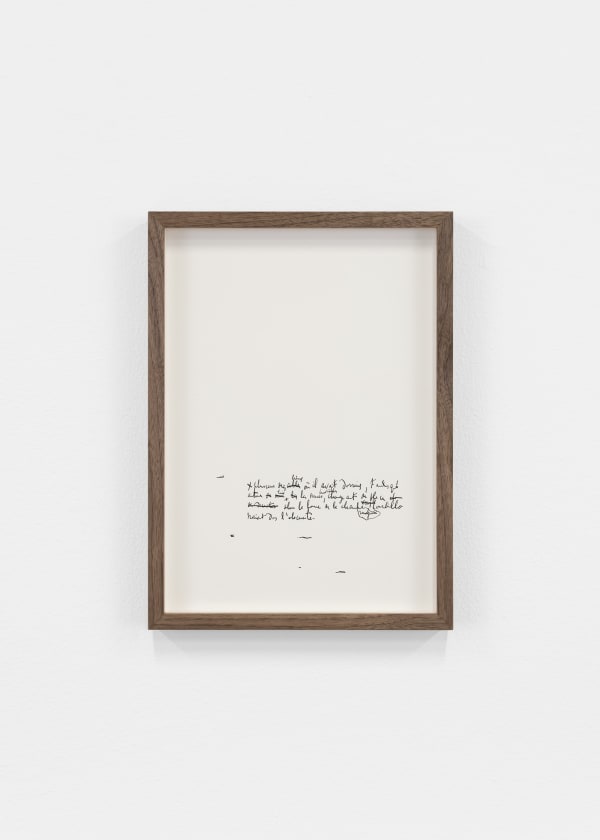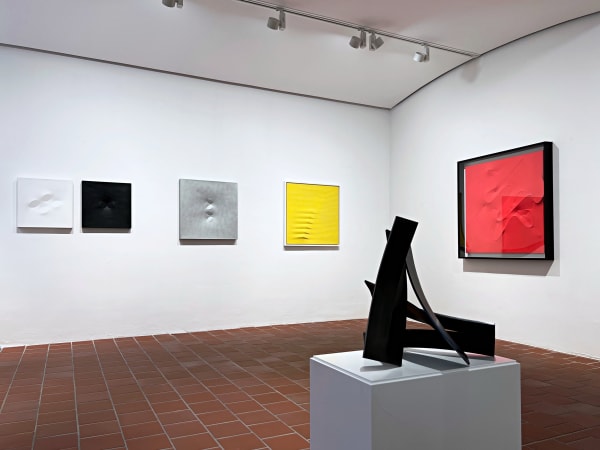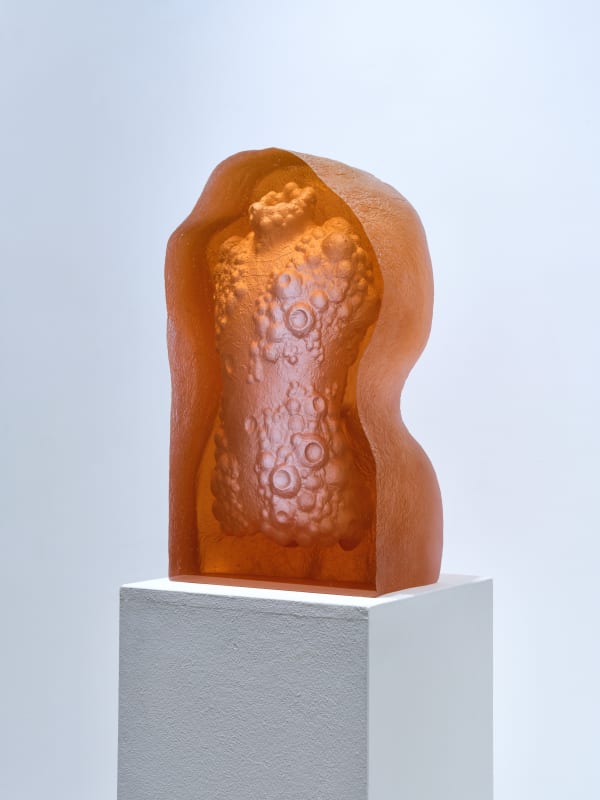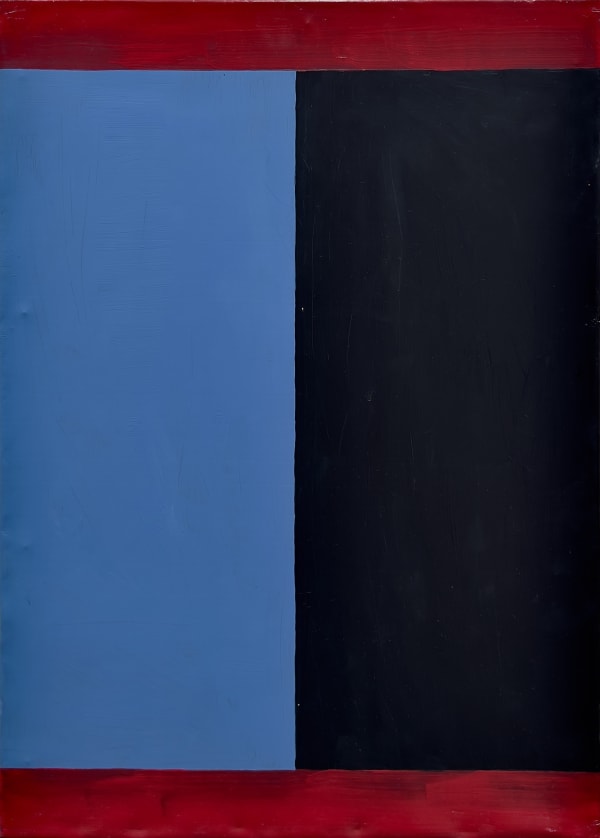Tomas Lundgren Swedish, b. 1985
Lundgren finds his subjects in archives, literature and history books. He has a persistent curiosity about past moments and how they intrude into today's social climate. The girl, Fränzi Fehrmann, was a model for the German expressionist Ernst Ludwig Kirchner, whose work was shown in the infamous exhibition Entartete Kunst, where the Nazi regime displayed art they considered "degenerate". The pilot Blacker was the first to fly over Mount Everest. Art forger Han Van Meegeren, whose hands mix paint on a palette, made his living as an art forger. He became famous for having sold a "Vermeer" to Hermann Göring. The female demon Ammit from Egyptian mythology was photographed by Harry Burton when Tutankhamun's tomb was opened in the 1920s.
The photographic prints show a colorful historical time full of contradictions, experimentation and voyages of discovery, a time when traditions were challenged and new ones formed, a time of brutality and unimaginable cruelty. The grid system that Lundgren uses divides the painting into several fields. He has painted one square at a time, with the other parts masked. There can be months between each box, hence the small shifts in each painting. The old photographs that have become paintings relate to the question of how we relate to the past. When we remember, something in the past is actualized. At the same time, there is always something incomplete in this recreation. In every memory there is a displacement, a certain type of distortion, which constitutes the uncertainty in the image. In the same way as Van Meegeren, Lundgren manipulates history in one way or another. What remains is the gap, a gap between us and history that can never be completely bridged.
The work Le Temps Retrouvé consists of hand-copied pages from the draft of Marcel Proust's In Search of the Time That Fled, written 1909-1922. As in Proust's novel suite, Lundgren's drawings include a search for understanding a historical time that no longer exists. The slow recreation of the historical images becomes an aspiration, an attempt or a gesture, which never quite arrives. What is revealed instead is a gap containing the part of the past (or the understanding of it) that can never be fully accessed. The part that forever remains in the past or in the hidden. Just as the novel suite begins with childhood memories being awakened by the taste of a madeleine cake, Lundgren's paintings point to a kind of search that comes from the corporeal. An exploration that is embodied in the hand, as an embodied gesture that forever searches and that partially - but never completely - finds.
A recurring theme in Tomas Lundgren's self-critical relationship with his artworks is that the gaze is drawn to the execution itself and how it is always bordering on something else, shaped and reshaped in relation to other media and techniques. A meta-reflection on the potential of the painterly image and its history emerges, a kind of media archeology with a strong melancholic touch, in which the image presented is a kind of phantasm. But here is also the doubter's belief, a search for the image's ability to convey memories and moods. It can be a phantasm, but beyond the structure and repetition, there is a sense of conviction in Tomas Lundgren's art. A glimmer of hope.
-
 Ammit, 2018-19
Ammit, 2018-19 -
 Van Meegeren, 2020-21
Van Meegeren, 2020-21 -
 Zeithof, 2022–23
Zeithof, 2022–23 -
 Personæ, 2022-23
Personæ, 2022-23 -
 Personæ I, 2022
Personæ I, 2022 -
 Personæ II, 2022-23
Personæ II, 2022-23 -
 Personæ III, 2022-23
Personæ III, 2022-23 -
 Personæ IV, 2022-23
Personæ IV, 2022-23 -
 Personæ IX, 2022-23
Personæ IX, 2022-23 -
 Personæ V, 2022-23
Personæ V, 2022-23 -
 Personæ VI, 2022-23
Personæ VI, 2022-23 -
 Personæ VII, 2022-23
Personæ VII, 2022-23 -
 Personæ VIII, 2022-23
Personæ VIII, 2022-23 -
 Personæ X, 2022-23
Personæ X, 2022-23 -
 Personæ XI, 2022-23
Personæ XI, 2022-23 -
 Personæ XII, 2022-23
Personæ XII, 2022-23 -
 Personæ XIII, 2022-23
Personæ XIII, 2022-23 -
 Personæ XIV, 2022-23
Personæ XIV, 2022-23 -
 Personæ XV, 2022-23
Personæ XV, 2022-23 -
 Personæ XVI, 2022-23
Personæ XVI, 2022-23 -
 Blanc crême, 2022
Blanc crême, 2022 -
 Blanc glauque, 2020
Blanc glauque, 2020 -
 Bleu d’Anvers, 2022
Bleu d’Anvers, 2022 -
 Bleu minéral, 2022
Bleu minéral, 2022 -
 Gros Vin, 2020
Gros Vin, 2020 -
 Lie-de-Vin, 2020
Lie-de-Vin, 2020 -
 Rose Hortensia, 2020
Rose Hortensia, 2020 -
 Rose malvacé, 2020
Rose malvacé, 2020 -
 Rouge vermillon, 2020
Rouge vermillon, 2020 -
 Le Temps Retrouvé (20), 2020
Le Temps Retrouvé (20), 2020 -
 Le Temps Retrouvé (18), 2020
Le Temps Retrouvé (18), 2020 -
 Le Temps Retrouvé (17), 2020
Le Temps Retrouvé (17), 2020 -
 Le Temps Retrouvé (15), 2020
Le Temps Retrouvé (15), 2020 -
 Le Temps Retrouvé (14), 2020
Le Temps Retrouvé (14), 2020 -
 Le Temps Retrouvé (11), 2020
Le Temps Retrouvé (11), 2020 -
 Le Temps Retrouvé (10), 2020
Le Temps Retrouvé (10), 2020 -
 Le Temps Retrouvé (09), 2020
Le Temps Retrouvé (09), 2020 -
 Le Temps Retrouvé (06), 2020
Le Temps Retrouvé (06), 2020 -
 Le Temps Retrouvé (05), 2020
Le Temps Retrouvé (05), 2020 -
 Le Temps Retrouvé (04), 2020
Le Temps Retrouvé (04), 2020 -
 Le Temps Retrouvé (02), 2020
Le Temps Retrouvé (02), 2020
Born 1985, lives and works in Gothenburg, Sweden.
Education
2011-13 MFA, Valand Academy, Gothenburg
2007-10 BFA, Malmö Art Academy, Malmö
2005-07 Dômen Konstskola, Gothenburg
Solo Exhibitions
2023 Historiens öga, Ebelingmuseet, Torshälla
2023 Disappearing Act, Galleri Cora Hillebrand, Gothenburg
2023 Bilderatlas, Galerie Leu, Munich
2022 Europa, Galleri Thomas Wallner, Simris
2021 Nachleben, Passagen Linköpings Konsthall
2021 Some Shade, Some Double, Some Phantom, 3:e våningen, Gothenburg
2020 Mimesis, Galleri Arnstedt, Östra Karup
2019 To be Echoing, Galleri Cora Hillebrand, Gothenburg
2018 Forever Someone Else, CFHILL, Stockholm
2018 The Rendering of Distance, Galleri Thomas Wallner, Simris
2017 Tomas Lundgren, Dalslands Konstmuseum, Upperud
2017 Schaefer Expedition, Röda Sten Konsthall Lounge, Gothenburg
2017 Schaefer Expedition, Landvetter Airport, Gothenburg
2017 Reenact, CFHILL, Stockholm
2016 Ellipsis, duo exhibition with Ylva Carlgren, Galleri Box, Gothenburg
2016 Beckers Art Award 2016, Färgfabriken, Stockholm
2015 Appearance through Absence, Galleri Thomas Wallner, Simris
2014 As Another, Galleri Mors Mössa, Gothenburg
2014 Fredrik Roos Stipendium 2014, Moderna Museet, Malmö
2013 The Invisible, Gallery Monitor, Gothenburg
2009 Portrait, Galleri Magnus Åklundh W.I.P., Malmö
Group Exhibitions
2023 Petit Salon, Curated by Ebba de Faire, Stockholm
2023 Chart Art Fair, Copenhagen
2021 Med nya ögon, Göteborgs Konsthall
2021 Close Up, CFHILL, Stockholm
2021 Chart Art Fair, Copenhagen
2020 Art Attack, Bohusläns Museum, Uddevalla
2020 Polyfoni 5, Galleri Thomas Wallner, Simris
2020 Den tänkande handen, Kungliga slottet, Stockholm
2019 Realism, Galleri Thomas Wallner, Simris
2019 Art Fair Suomi, Helsinki
2017 Någon sorts kunskap, Göteborgs Konstmuseum
2017 Polyfoni 4, Galleri Thomas Wallner, Simris
2017 Beckers Konstnärsstipendium 30 år, Färgfabriken, Stockholm
2016 Valand Revisited, Strandverket Konsthall, Marstrand
2016 Origo, Krognoshuset, Lund
2016 Painting Failures, Moderna Museet, Malmö
2015 Polyfoni 3, Galleri Thomas Wallner, Simris
2014 40th Anniversary Jubilee, Galleri Thomas Wallner, Simris
2014 Samlarens Blick, Bohusläns Museum, Uddevalla
2014 Polyfoni 2, Galleri Thomas Wallner, Simris
2013 Frames & Stages, Göteborgs Konsthall
2013 24 Spaces – A Cacophony, Malmö Konsthall
2013 Galleri Thomassen, Gothenburg
2012 An Act in the Commons, Strömstad
2012 Field Office, Repositioned Gallery, Glasgow
2012 Painting for Real, Östergötlands Museum, Linköping
2011 57°38’10”N 11°46’40”, Brännö, Gothenburg
2011 New Scene, Bohusläns Museum, Uddevalla
2010 Year Exhibition, Malmö Art Academy, Malmö
2010 Bachelor Show, KHM Gallery, Malmö
2010 Malmö Goes Oslo, One Night Only, Oslo
2009 We were Born with a Tremendous Longing, Galleri Pictura, Lund
2009 Year Exhibition, Malmö Art Academy, Malmö
Represented
Chalmers University of Technology
Göteborgs Konstmuseum
Lindéngruppen
Malmö Konstmuseum
Moderna Museet
Region Skåne
Statens Konstråd
Sveriges Allmänna Konstförening
Grants
2023 Thordénstiftelsens kulturstipendium
2022 One year working grant, the Swedish Arts Grants Committee
2020 Adlerbertska Kulturstipendiet
2020 Den tänkande handen, Konstakademien
2020 Längmanska kulturfonden
2018 Two year working grant, the Swedish Arts Grants Committee
2018 Göteborgs stads kulturstipendium
2016 Beckers Art Award 2016
2015 One year working grant, the Swedish Arts Grants Committee
2014 Fredrik Roos Art Grant 2014
2013 Stiftelsen Eric Ericsson
2013 Eva och Hugo Bergmans minnesfond
2012 Otto och Charlotte Mannheimers fond
2008 Max Albin Dahlgrens stipendiefond
2007 Uddevalla Kulturstipendium
2007 Theodor och Hanne Mannheimers fond
Repetition and Phantasm
by Håkan Nilsson
-

Gallery Selections
2 Apr - 29 Jun 2025Works by Gerhard Richter Günther Förg Otto Piene Heinz Mack Gotthard Graubner Ylva Carlgren Ditte Ejlerskov Roy Lichtenstein Tomas Lundgren Etienne ViardRead more -

Resonant Surface
The Intersection of Light, Color, and Space 5 Dec 2024 - 1 Feb 2025Opening December 5, 5-8 PM MARKUS ÅKESSON, KARIN ALFREDSSON, BERNARD AUBERTIN, GEORG BASELITZ, AGOSTINO BONALUMI, YLVA CARLGREN, PETER DOIG, DITTE EJLERSKOV, GOTTHARD GRAUBNER, RONI HORN, ÅSA JUNGNELIUS, IMI KNOEBEL, TOMAS...Read more -

Art & Design Tegernsee
Art Fair 3 - 6 Oct 2024We are presenting works by Bernard Aubertin, Markus Åkesson, Georg Baselitz, Agostino Bonalumi, Ylva Carlgren, Gotthard Graubner, Roni Horn, Åsa Jungnelius, Imi Knoebel, Tomas Lundgren, Otto Piene, Sigmar Polke, Turi...Read more -

Summer Show
9 Jul - 31 Aug 2024Works by Georg Baselitz, Ylva Carlgren, Gotthard Graubner, Hubertus Hamm, Roni Horn, Åsa Jungnelius, Imi Knoebel, Tomas Lundgren, Maria Miesenberger, Otto Piene, Gerhard Richter, Etienne Viard, Martin Wickström
-

Various Perceptions
Mixed Media 2 May - 30 Jun 2024Works by Georg Baselitz Ylva Carlgren Gotthard Graubner Hubertus Hamm Åsa Jungnelius Imi Knoebel Tomas Lundgren Maria Miesenberger Emil Nolde Otto Piene Bernd Ribbeck Gerhard Richter Dieter Roth Thomas Ruff...Read more -

Winter Show
Full House 30 Nov 2023 - 31 Jan 2024Works by Günther Förg Otto Piene Ylva Carlgren Martin Wickström Tom Wesselmann Imi Knoebel Tomas Lundgren Paolo Scheggi Maria Miesenberger Agostino Bonalumi Michael van Ofen Bernard Aubertin Jean-Luc Moerman Florian...Read more -

Tomas Lundgren
Bilderatlas 17 Mar - 22 Apr 2023To understand oneself, and why one's life looks the way it does, it is not uncommon to look at old pictures to find an explanation. After all, the present is...Read more
Tomas Lundgren, Avbilder, 2023

